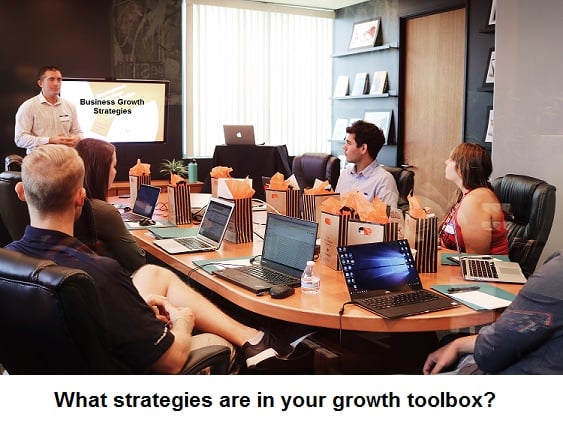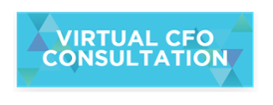How a Business Operating System Benefits Digital Agencies
When you’re trying to grow your business, or even solve a management issue, there are a few serious ways you can go about it. If you’re a DIY kind of leader, you can read a book (and there are some great ones out there). Or if you’re looking for outside expertise, you can hire a consultant (and there are some great ones out there).
But both those approaches have limitations.
Books will offer good ideas that you might want to implement. I’m a huge reader myself. I’ll read some books multiple times, and I’ll learn something new every time. But I don’t usually buy into the whole process that any book suggests. If you don’t look inside the business and mold the tools to what the business is looking for and the goals they’re trying to achieve, you won’t get results.
Then there’s the consultant who comes in for an intensive seminar. They’ll give you exercises to troubleshoot your problems, but the excitement they drum up will likely fade once they leave the conference room and their handouts land in the recycle bin.
In my experience growing Summit, I’ve found that a business operating system brings the best of both worlds–you take timeless concepts and universal principles that work in business across the board, and then an expert facilitator figures out where you are in your company’s growth cycle, decides which tools you need to implement, and follows up to help you learn from the experience.
concepts and universal principles that work in business across the board, and then an expert facilitator figures out where you are in your company’s growth cycle, decides which tools you need to implement, and follows up to help you learn from the experience.
Recently I sat down with Tom Barrett of Pinnacle, who has helped us achieve phenomenal growth at Summit, to talk about why digital agencies might choose to use business operating systems, what they can expect, and how to get the most out of it.
What is a Business Operating System?
An operating system is the approach we take to working on our business. Industry-defining authors like Jim Collins of Good to Great and Turning the Flywheel, Michael Gerber of E-myth, Verne Harnish of Scaling Up, and Gino Wickman of Traction have created systems for businesses to improve management practices, increase team health, strategize on differentiators, and grow and scale the organization.
But you can’t just take a book or a program and apply it to your business. A one-size-fits all approach won’t get you where you want to go. So much of our knowledge is a combination of what we read and what we do. You not only need to know which tools to use, you need to experiment and find out the right way to use them.
The best business operating systems take the tools that are out there and figure out which will be most valuable to your organization. When you pick the right tools, you give individual employees and entire teams the mindset to reach their full potential (which is the only way for a business to truly be successful).
It all starts with understanding where your business is right now – not getting ahead of yourself, deciding if you need to work on the basics, while being efficient with your time. Maybe you’ve already decided on your core values, so you don’t need to rehash them. You can jump right to the area where you need to make improvements.
Here are three areas a business operating system, like Pinnacle, can help you with. (These ideas are also discussed in detail in Pinnacle: Five Principles That Take Your Business to the Top of the Mountain by Steve Preda and Gregory Cleary).
What a Business Operating System Can Help You Do:
1. Improve Team Health
Everyone wants to get to the payoff and see results. But before you can even talk about setting goals (let alone achieve them), you need to make sure your team is in a place where everyone can sit in a room together and do the work.
Sometimes that means getting the right people on the bus (and the wrong people off), which is an idea from Good to Great. But most of the time, our people are the right people–it’s just about remembering that there’s always a better person inside each of us. And that’s where choosing the right tools–and learning how to implement them–can pay dividends.
In a small business setting, this might mean having tough conversations. For a business that formed with two or three people who decided to bring together their unique skill sets (development, design, business operations), there might come a time when the business can’t grow anymore; one of the owners might actually become the lid on growth, for whatever reason.
That’s where it helps to have an outside expert help walk your team through the difference between ownership and leadership, and potentially letting go of the leadership role if that is preventing your team from flourishing.
2. Define Strategy
When businesses grow quickly, there’s often a phase when you’re just trying to react to all the opportunities, so you lose focus on what makes you unique and valuable in the marketplace. Business operating systems can help you work through tools like Collins’ flywheel to make sure you’re clear on your differentiating activities–and that the whole team buys in.
Once those insights are in place, then you can move to the details of how you’re going to get there, for example, by determining your rocks, pebbles and sand–and then rating how you’re doing on each one as part of your quarterly review.
Anyone can set goals; it’s harder to set the right goals. In the early phases of working with a new operating system (the first few quarters), goal completion is typically not great. But that’s valuable information that can help change your approach going forward. Same goes if goal completion is too good–maybe you need to set your bar higher.
3. Boost Accountability
One of my favorite exercises is working with an accountability chart. The idea here is to build the company and then put people into it, not to build the company around the people. That way, if your entire team wins the lottery overnight and you have to start from scratch, you know exactly what every new hire has to do.
It starts with the idea that a business has three big functions: get work, do work, and get paid. With each of those functions, you drill down and ask what you need to get it done: for example, to get work, you may need a marketing function that’s separate from the sales function.
Then you build leadership seats for each function, with the idea that leaders need to do three things: 1) coach, mentor and manage their people; 2) own the process; 3) own the goals.
From there, it becomes easier to outline the roles and responsibilities of each department member – and clear expectations are the foundation of employee engagement.
When you build these charts, everyone in the agency knows their own responsibilities, but also everyone else’s. That helps avoid lane violations and people dropping the ball.
Accountability charts are also nice growth tools because you can create a current one, one for the next six months that gives you room to grow, and one for two years out–so you know what your hiring should look like to get your organization to the size you’re hoping to reach. (Just don’t try to hire all those people right now; your Virtual CFO will not let you.)
How to Get the Most Out of a Business Operating System
When you work with an outside facilitator, like Pinnacle, on a business operating system, you probably won’t have to do much homework ahead of time. It usually starts with an intensive session where everyone is coming together, shutting off their connection to the outside world, and doing a deep dive on the business.
That said, it can’t just be a one-time event if you want to see real change: once a quarter for two years is a more realistic minimum commitment to get to the place where you need to be. But we’ve been with Tom now for years; it’s a huge part of how we’ve achieved our growth, and how we plan to do a five-times multiple in the next five years.
Growing a business is a process. There’s always a next level. The tools you implement will build on one another. And, as you grow, your business operating system needs to evolve, too.
The important thing is to pick a system and commit. Check them all out, be open to finding the right fit, and fully buy into that. Then lean into the hard parts. That’s how you see results.
.png?width=120&height=77&name=Summit-Virtual-CFO_color_rgb%20(1).png)














